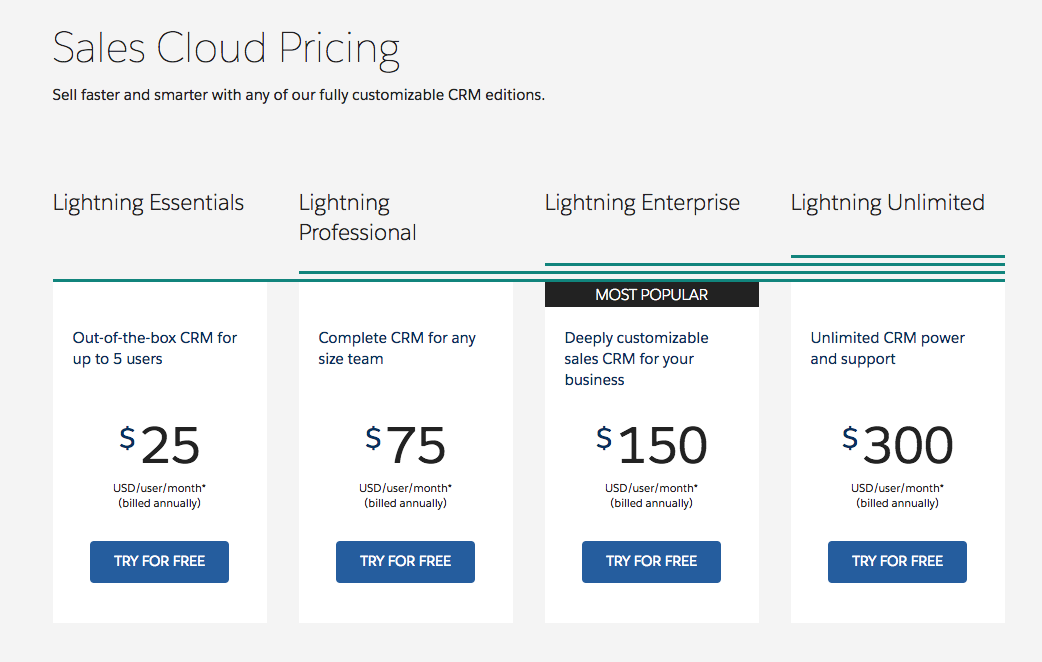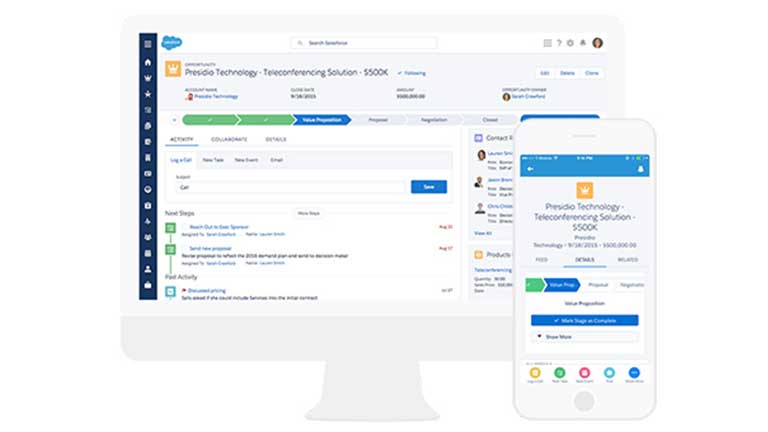MARKETING MANAGEMENT PROCESS
Fastest Path to Pipeline: Best Practices for Inside Sales Teams
Growing your Business with Sales Cloud:
Practices to Drive Adoption and Success
Not to brag, but if any company has a right to claim being an expert on filling the sales pipeline, it’s Salesforce. With a global pipeline of over $2.1 billion last fiscal year, it makes sense that the world’s leading CRM software company should also generate a significant amount of sales opportunities to be nurtured through the sales pipeline. And it makes sense that the world’s leading CRM provider should be an expert in garnering the results they advertise: Salesforce’s inside sales organisation created over 100,000 opportunities in the sales pipeline over the past fiscal year.
Megan Oleson, Director of Enterprise Sales Development at Salesforce, leads this Dreamforce presentation aimed at helping businesses grow their own sales pipelines through using inside sales strategies. Oleson, an eight-year Salesforce veteran, started Salesforce as a sales development rep in inside sales and gives audiences a candid view of Salesforce’s marketing management processes. Without the inside sales team, says Oleson, Salesforce would not have experienced its incredible success: a sales pipeline which, last year, represented 25% of the total pipeline in the US.
These best practices for inside sales teams were presented throughout the session:
Use Hyper-Focus to Flood the Pipeline
Salesforce’s marketing management process divides the focus of customers into two groups, allowing the upper and lower portions of the sales pipeline to be flooded with leads. Oleson explains there are two divisions within the inside sales department: Sales Development Reps and Business Development Reps. Sales Development Reps, or SDRs, are inbound sales reps who focus on warm leads from potential clients who have taken some action on the website: attended a webinar, requested a demo, logged on to live chat, or downloaded content. These warm leads are typically from small businesses and commercial industries. Sales Development Reps make contact with these leads, log information into Salesforce CRM, where an Account Executive will begin nurturing these opportunities in the sales pipeline.
Business Development Reps “are the cold callers, the hunters” says Oleson. These outbound sales reps focus on higher-end commercial and enterprise opportunities. Once a lead is qualified, it is sent to an Account Executive.
These sales process stages allow SDRs and BDRs to provide a constant influx of leads from two different market segments: small business/small commercial and large commercial/enterprise. Account Executives follow these opportunities through the sales pipeline.
Retain Sales Reps by Offering a Career Path
Salesforce’s model of having sales process stages throughout the sales pipeline not only gives hyper-focus to sales teams, it also provides a career path for its sales reps. When sales reps see a clear career path, they stay motivated and turnover is lower, making the inside sales department more efficient.
Being an SDR or a BDR is tough, admits Oleson, who started her career at Salesforce as an SDR. “So how do you motivate them? It’s all around the career path,” answers Oleson. SDRs are promoted to BDRs who may then, advance to the Account Executive ranks. These sales process stages not only offer a laser-focus on filling the pipeline, they provide a motivating career path for inside sales reps.
Compensated Based on Quality AND Quantity
Of course, you can’t talk about motivating sales reps without considering the compensation plan. To get the most out of an inside sales department, the compensation needs to motivate the sales reps while reaching company goals. ‘Your pipeline is only as strong as the opportunities equated into revenue,” explains Oleson. Oleson focuses on BDRs in her presentation to give other businesses ideas on using inside sales to develop their sales pipeline.
BDRs at Salesforce are compensated through a Revenue Quota and a Leads/Pipeline Quota. “Balanced incentives drive desired behaviours,” explains Oleson. The Revenue quota focuses on quality, the amount of revenue generated for the company. A monthly percentage payout is based on regional goals met and individual contribution as leads are moved through the sales pipeline and are converted into sales.
The Leads/Pipeline Quota focus on quantity. Business Development Reps are asked to meet a monthly quota of qualified opportunities sent on to Account Executives.
Develop the Sales Pipeline through Sales Process Stages
BDRs bring qualified leads through a four-step marketing management process. The first step for BDRs is to find and qualify leads. Often, reps will use leads from Data.com, a lead service associated with Salesforce. Second, BDRs are trained to look at the industry focus. For example, if reps are focused on financial services accounts, Salesforce helps their reps understand the challenges and issues within financial services so the reps can offer a solution. The third step is messaging. Reps share proven success stories but also connect to their contacts with a “why you? why now?” message. For example, a VP of Sales may have been recently promoted and tasked with improving processes. The fourth step is a solution-sell where BDRs offer solutions to help prospective clients meet their goals.
Make Your Inside Sales Department More than People with Telephones
Presenting with Oleson is Patrick Lazaro, Director Inside Sales with AmerisourceBergen. A drug wholesaling company with 16,000 employees worldwide, AmerisourceBergen distributes mainly to independent pharmacies. Lazaro explains that the marketing management process of his company recently evolved with the development of an inside sales department. This change came about as a result of company goals to offer better service and customer advisory relationships as well as to retain their customers. “We were not calling our customers, but oddly enough, there was someone willing to call them every day, and that was our competitors,” says Lazaro.
Lazaro says they previously had a disjointed system: “We had people who had a telephone, and I quickly found out that does not constitute inside sales.” Lazaro explains the deliberate planning of their inside sales department, a team that has grown from a 6 to the team of 70 in the last 14 months.
Use Inside Sales to Foster Relationship and Become a Trusted Advisor
Today, AmerisourceBergen’s inside sales is aligned with customer care and field sales in order to meet customer needs and provide that advisory relationship the company hoped to offer. Inside sales reps can provide weekly support and advice to customers as well as take orders, allowing field reps to make more strategic visits to help their clients plan their business. In the past, says Lazaro, if a change happened in the market and a new drug was launched, it could be a month before the field reps to contact all their clients. “Inside sales offered us organisational dexterity,” explains Lazaro. Now, with an inside sales team, every client can be contacted within 48 hours. Each inside sales rep has assigned customers and assigned calls ensuring a personalised customer relationship.
The outbound sales center Lazaro directs is organised with Salesforce CRM software which allows all three segments of the business--field sales, customer care, and inside sales--to see the customer history. This CRM strategy allows marketing management processes for AmerisourceBergen to better assist their customers while simultaneously growing their own business. Lazaro reports double-digit growth since implementing the inside sales program.
Take Your Marketing Management Processes on the Campaign Trail
Alex Turner, a career inside sales expert, advocates using scalable and predictable processes to build inside sales campaigns and grow the sales pipeline. “There’s energy and passion in [inside sales],” proclaims Turner, who recently accepted a position as the Global Director of Sales Development with Wrike, a company that provides project management applications.
Turner admits that the requirements of interacting with the modern customer can be overwhelming. “That’s where the technology and backbone of Salesforce is going to set you up for success.”
Turner shares that he “lives and dies by campaigns” and gives the example of following up with everyone who comes to a trade show booth as a reason for a campaign. “If it doesn’t have a defined start and defined end, you can’t gauge it,” instructs Turner who works in three-week sprints with his inside sales teams. Using out-of-the-box Salesforce CRM reports with their metrics and dashboards, Turner will measure the success of a campaign and make adjustments for the next campaign. Because of the short three-week timespan of Turner’s campaigns, he can quickly make adjustments in strategy. “Three weeks gives you enough time to gather data but it’s quick enough that you can bounce very quickly and adjust,” explains Turner.
As an aside, Turner reveals that many organisations don’t understand the power of the Salesforce CRM console which allows creation of custom views so both the List View and Lead Lists can be open in the same screen without having multiple tabs open so his sales reps can be “strapped in and ready to go.” This CRM program for inside sales is an invaluable tool.
See Inside Sales in a New Light
Starting out as a BDR himself, Turner has become an evangelist for inside sales. He notes that Inside sales positions has evolved into a career path rather than something of a punishment. One reason for this shift, says Turner, is that the recession made it impractical to travel extensively. “You don’t have to hop on a plane to close every deal,” notes Turner. Citing Steve Richard, Trish Betruzzi, and Ken Krogue as thought leaders who have revolutionised the field of inside sales, Turner says the attitude towards inside sales is shifting.
And with that shift in attitude, companies can leverage inside sales strategies to grow their business. By providing support, a career path, and respect to their inside sales reps, companies can build big with a focused inside sales program as shown by inside sales experts Oleson, Lazaro, and Turner.




